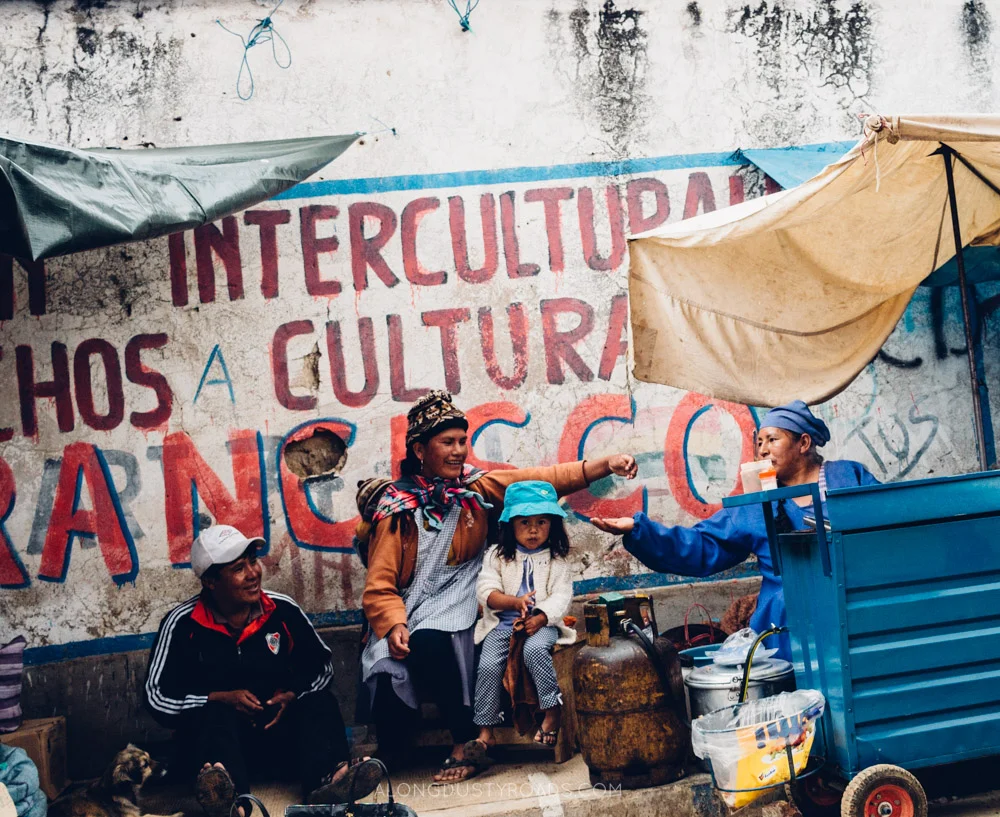Looking to discover just how diverse Bolivia is? Then you need to take a day-trip from Sucre to the Sunday market at Tarabuco.
Spend a handful of days in in this land-locked Andean country and you'll quickly be struck by the huge number of indigenous groups that are still in existence. With more than 60% of Bolivia's population belonging to one of 36 indigenous groups, it's a genuine mosaic of South American diversity.
Shockingly however, for decades (centuries when you include Spanish colonialism) most of these people were barely recognised by their own government, represented by no one and often lacking even basic human rights. It wasn't until the election of Evo Morales in 2005 as Bolivia's first indigenous president, that the lives of two thirds of the population were considered worth improving, with a resurgence in the promotion of indigenous languages in the public sphere, improved indigenous representation at the municipal and national level and, fundamentally, more respect and prominence attached to the needs of the country's various ethnic groups than ever before.
It's still not perfect by any means, and there have been no shortage of controversies, but it is still marked progress.
Tarabuco, approximately 65 km southeast of Sucre, offers perhaps the best opportunity for travellers looking to gain a unique snapshot of the extent of Bolivia's ethnic distinctiveness. Its market, held every Sunday, is the bedrock of the weekend for locals - either crucial to their incomes, or the hub for families to make most of their purchases for the week from the myriad of stalls lining the streets - and hundreds come from the surrounding countryside to sell their wares or stock up on goods. Many of these communities are from distinct indigenous groups and so, when Sunday arrives, the streets are melting pot of a fantastic mix of traditional dress styles (the range of hats alone is worth the journey); we didn't visit anywhere else quite like it in Bolivia.
You'll find our tips on visiting Tarabuco market, as well as advice on how to get there with public transport from Sucre, at the bottom of the post.
HOW TO GET TO TARABUCO MARKET FROM SUCRE
Although there are are number of tour providers making the trip, we did it on our own with public transport and can happily recommend it to other travellers.
We took the #14 bus outside Sucre's Central Market (1.5 bolivanos each) to the crossroads where Avenida de las Americas meets Avenida German Mendoza. Here you'll find minibuses leaving when they're full for Tarabuco (10 bolivianos per person, travel time of 90 minutes to 2 hours). The bus will drop you off near the main plaza in Tarabuco and, from there, your best bet is simply to stroll around the surrounding streets, head up to the large fruit & veg market and take it all in slowly.
We'd advise that you leave early in the morning, aiming to catch the collectivo (minibus) by 9 a.m at the latest and we recommend confirming with your hostel about which buses rare best / quickest forreaching Avenida de Las Americas and the parada de Tarabuco from where you're based.
To return to Sucre, return to the main plaza and you will find the collectivos for Sucre nearby. This bus will hopefully drop you off back at Avenida de las Americas, from where you shouldn't have too much trouble finding a connection back to central Sucre - again costing about 1.5b per person.
With all the buses mentioned above, we recommend confirming the destination and price with the driver or ayudante before you board.
Tips for TARABUCO Market
- You should aim to arrive at the market earlier rather than later - things start to die down after 2 p.m, which is when you should try to head back to Sucre.
It's really not too large and if you were in a rush, you could probably cover everything in an hour. However, that's not really the point of a visit to Tarabuco. Take your time, wander the same streets, browse the stalls, have some cheap lunch in the plaza, people watch or try to strike up a conversation - you've not come all this way to go quickly.
- For us, the thing that set Tarabuco market apart was the many of these communities continue to live such traditional lives, and so wearing the same style of clothing as their forefathers is done out of habit, tradition and necessity, not to please tourists and to provide us with photo-opportunities. We take our photos without people realising (as that's how we like to take photos) and would ask anyone asking for a posed shot or who is less inconspicuous than us to be respectful and considerate when taking or trying to take a photo.
- As the market has become more popular with tourists it has unfortunately started to cater a little more towards them. So, don't be surprised to see a proliferation of tat which you'll see everywhere else in Bolivia rather than every stall having lovingly crafted hand-woven wears.
- The prices for some of the items we really wanted were, unfortunately, prohibitively high. And this wasn't a case of us trying to haggle a little Bolivian lady down to nothing - it was genuinely too much for us to justify the cost. Don't expect everything at rock-bottom prices.
- You can haggle here but do it respectfully and with perspective - a dollar or two extra for you is likely not too much, whereas for the vendor it may make a huge difference.
- Bring cash with you, including plenty small coins for the bus or buying smaller items.






























